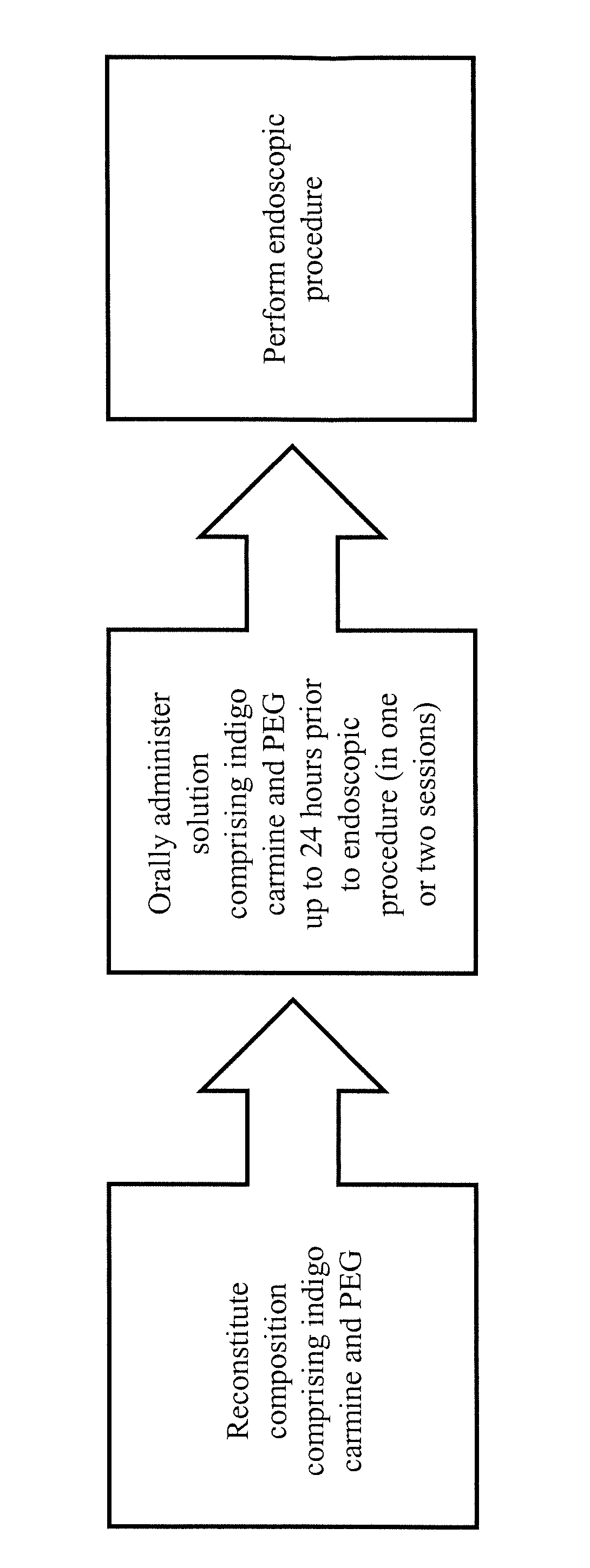Indirect Chromoendoscopy with an Oral Indigo Carmine Base Preparation
a technology of indigo carmine and chromoendoscopy, which is applied in the field of indigo carmine pharmaceutical compositions, can solve the problems of difficult detection, inability to widely adopt chromoendoscopy, and deterioration of the chromoendoscope, so as to improve the polyp detection rate, enhance the lesion detection, and improve the efficiency of chromoendoscopy performance
- Summary
- Abstract
- Description
- Claims
- Application Information
AI Technical Summary
Benefits of technology
Problems solved by technology
Method used
Image
Examples
Embodiment Construction
[0009]Indigo carmine is FDA approved for use as a food colorant. Specifically, the FDA certifies up to 2 mg / kg of daily intake of indigo carmine, and there are no reports of toxicity from oral administration. If a 2L solution of 0.008% of indigo carmine is ingested it would amount to a dose of 160 mg. Most of the oral solution will reach the colon intact. In rat studies, 3% of the dye taken orally was absorbed (Lethco et al., 1966). Data suggest that the food colorant absorbed in humans will be cleared very rapidly from circulation (Oravisto K., 1957). The combination of low levels of absorption, rapid clearance, and no known toxicity together make it unlikely that this food colorant would reach clinically significant concentrations, and thus indigo carmine dye will be well tolerated.
[0010]As further support of the safety of indigo carmine given for indirect chromoendoscopy, it is estimated that absorption through oral administration according to the methods of the present invention...
PUM
| Property | Measurement | Unit |
|---|---|---|
| wt % | aaaaa | aaaaa |
| composition | aaaaa | aaaaa |
| time | aaaaa | aaaaa |
Abstract
Description
Claims
Application Information
 Login to View More
Login to View More - R&D
- Intellectual Property
- Life Sciences
- Materials
- Tech Scout
- Unparalleled Data Quality
- Higher Quality Content
- 60% Fewer Hallucinations
Browse by: Latest US Patents, China's latest patents, Technical Efficacy Thesaurus, Application Domain, Technology Topic, Popular Technical Reports.
© 2025 PatSnap. All rights reserved.Legal|Privacy policy|Modern Slavery Act Transparency Statement|Sitemap|About US| Contact US: help@patsnap.com

